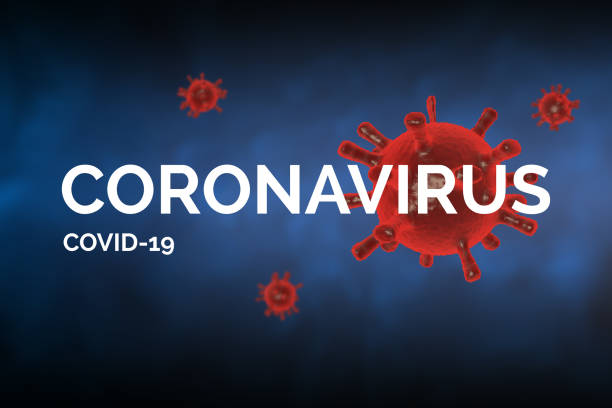What is Autism Spectrum Disorder?
Autism spectrum disorder (ASD) is a neurological and developmental disorder that can affect how people interact with others, communicate, learn, and behave (National Institute of Mental Health, 2023).
What are signs and symptoms of ASD?
During childhood:
- Difficulty with eye contact
- Does not respond to name
- Delayed developmental milestones (language, motor, or cognitive skills)
- Lining up toys
- Flapping hands or spinning in circles
- Difficulty attending to tasks or play
- Epilepsy or seizure disorder
(Centers for Disease Control and Prevention, 2023)
During Adolescence & Adulthood:
- Restricted interests
- Repetitive behaviors
- Symptoms affecting one’s ability to function in school, work, or other areas of life
- Difficulty with back and forth communication
- Difficulty with social cues from others
- Displaying facial expressions or body language that does not match the other person
- Becoming upset by slight changes in routine
- Difficulty with transitions
- Sensitivity to sensory input such as light, sound, clothing, or temperature
(National Institute of Mental Health, 2023).
Misconceptions of Autism Spectrum Disorder in the Media
- Autistic people are primarily male and white
- Autistic people have extraordinary abilities
- Vaccines can cause autism
Misconception #1: Autistic people are primarily male and white
Popular TV series currently in the media include The Good Doctor, The Big Bang Theory, and Netflix’s own Atypical. A common trend you may notice is that the main characters in these series can be described as white males.
Why is this misleading? — This portrayal of ASD is misleading and can be harmful for the ASD community. This is because it’s not inclusive to all genders, races, and ethnicities that can also be diagnosed with the disorder. Therefore, leading to those individuals not feeling seen, heard, or understood in their community.
Researchers have discussed people with ASD going unnoticed, specifically girls, because signs and symptoms can present differently (Cariveau et al., 2021) than what is shown on television. Therefore, the media is encouraged to be more inclusive by portraying all genders, races, ethnicities, personalities, and behaviors typical of the autism spectrum according to reliable sources.
Therefore, it’s important for the media to adopt the idea that any individual of any gender, race, ethnicity, and sexual orientation and be a part of the autistic community (Feder, 2021). This idea should be portrayed in pop culture and the media for Autism awareness and education.
Misconception #2: Autistic people have extraordinary abilities
In some TV shows, like The Good Doctor and The Big Bang Theory, characters are portrayed to have careers requiring exceptional abilities i.e., a surgeon or a scientist.
This portrayal of ASD in the media is misleading. A condition called savant syndrome is known as spectacular skills in areas including art, music, math, and science. However, the author of an Autism and developmental disorder journal discusses how rare this syndrome really is. To be more specific, he explains that only 1 in 10 people that are autistic actually display savant-like skills (Treffert, 2014).
Why is this misleading? – The media is leading society to believe most autistic people to live in a way that is not the reality. This is not inclusive to autistic people that do not have the same extraordinary abilities and, therefore, they will not be seen in the same light. So, if this condition that shows people having spectacular skills is rare, why is the media portraying it as the characteristic of almost every show featuring an autistic main character? The media needs to show the other 90% of characters not being shown in TV and movies!
Misconception #3: Vaccines can cause Autism
In the media, many famous celebrities have been seen discussing their beliefs about a relationship between vaccinations and ASD. Here, you will see a YouTube video from the TODAY show featuring well-known actor, Robert DeNiro, speaking on the topic:
Why is this misleading? – It is important to understand how the media often portrays incorrect information relating to ASD. Although Robert DeNiro shares his thoughts about vaccinations leading to ASD on YouTube, the Centers for Disease Control and Prevention (CDC) (2021) have written and talked about many studies that have been run over the last 18 years to test for a possible link between vaccinations and ASD. The results of these studies show that there is no link between vaccinations and autism spectrum disorder (CDC, 2021). Therefore, the CDC is a reliable source to find information related to vaccinations and ASD instead of celebrities in the media. Check out their website for more information.
References
Cariveau, T., McCracken, C., Bradshaw, J., Postorino, V., Shillingsburg, M. A., McDougle, C. J., Aman, M. G., McCracken, J. T., Tierney, E., Johnson, C. S., Lecavalier, L., Smith, T., Swiezy, N. B., King, B. H., Hollander, E., Sikich, L., Vitiello, B., & Scahill, L. (2021). Gender differences in treatment-seeking youth with autism spectrum disorder. Journal of Child and Family Studies, 30(3), 784–792. https://doi.org/10.1007/s10826-021-01905-7
Centers for Disease Control and Prevention. (2021, December). Autism and vaccines. https://www.cdc.gov/vaccinesafety/concerns/autism.html
Centers for Disease Control and Prevention. (2023, January 11). Signs & symptoms | Autism spectrum disorder. Centers for Disease Control and Prevention. https://www.cdc.gov/ncbddd/autism/signs.html
Feder, J. (2021, April 13). Autism Representation in the Media — And How It Impacts Real Life. Accessibility. https://www.accessibility.com/blog/autism-representation-in-the-media-and-how-it-impacts-real-life
National Institute of Mental Health. (2023, February). Autism Spectrum Disorder. https://www.nimh.nih.gov/health/topics/autism-spectrum-disorders-asd
Taheri, A., Perry, A., & Minnes, P. (2016). Examining the social participation of children and adolescents with intellectual disabilities and autism spectrum disorder in relation to peers. Journal of Intellectual Disability Research, 60(5), 435–443. https://doi.org/10.1111/jir.12289
Treffert, D. A. (2014). Savant syndrome: Realities, myths and misconceptions. Journal of Autism and Developmental Disorders, 44(3), 564–571. https://doi.org/10.1007/s10803-013-1906-8





























